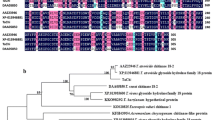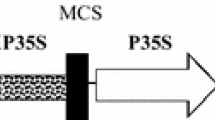Abstract.
Agrobacterium-mediated transformation of soybean cells and the production of fertile transgenic soybean [Glycine max (L.) Merrill] plants using the cotyledonary-node (cot-node) method were improved by amending the solid co-cultivation medium with L-cysteine. The goal of this study was to investigate the role of cysteine and other thiol compounds in increasing the frequency of transformed soybean cot-node cells. The frequency of transformed cells was increased only when L-cysteine was present during co-cultivation of Agrobacterium and cot-node explants. This effect was due to the thiol group since D-cysteine and other thiol compounds also increased the frequency of transformed cells. Copper and iron chelators also increased the frequency of transformed cells, indicating an association with inhibition of polyphenol oxidases and peroxidases. Thiol compounds likely inhibit wound- and pathogen-induced responses, thereby increasing the capacity for Agrobacterium-mediated transformation of soybean cells. The increases in transformed cot-node cells were independent of soybean genotype, Agrobacterium strain, and binary plasmid.
Similar content being viewed by others
Author information
Authors and Affiliations
Additional information
Revision received: 14 August 2001
Electronic Publication
Rights and permissions
About this article
Cite this article
Olhoft, P., Lin, K., Galbraith, J. et al. The role of thiol compounds in increasing Agrobacterium-mediated transformation of soybean cotyledonary-node cells. Plant Cell Rep 20, 731–737 (2001). https://doi.org/10.1007/s002990100388
Received:
Accepted:
Published:
Issue Date:
DOI: https://doi.org/10.1007/s002990100388




